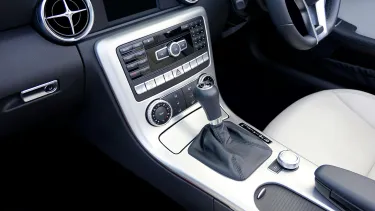Technology continues to advance in the automotive sector, to the point where some developments have become mandatory by law. In this context, we have the ADAS system.
The acronym ADAS stands for Advanced Driver Assistance Systems, meaning that any technological development falling under these functions is identified as an ADAS system.
How does an ADAS system work?
The latest and most innovative cars come with multiple ADAS systems factory-installed in the vehicle's body and electronic system.
These systems rely on cameras, various types of sensors, radars, or even lasers, which are capable of gathering information from the vehicle's surroundings to offer real-time responses.
The development of microprocessors and even Artificial Intelligence keeps these systems at the cutting edge of automotive technology, allowing for more accurate and useful information with increasingly effective autonomous responses from the vehicle.
If we're asked whether we know any ADAS systems, there are several that are already widely known in the automotive industry. For example, the parking sensor camera is quite practical and has been common for years, as well as proximity or collision sensors.
Additionally, ADAS systems can be categorized into two types based on their action on the vehicle:
- Passive systems: These are based on warning the driver in different ways.
- Active systems: These autonomously act on certain vehicle components like the brakes.
In both cases, ADAS systems can be deactivated or canceled with minimal action from the driver, either through the steering wheel or the pedals.
Objectives of the ADAS system in vehicles
Nowadays, there are so many ADAS systems in new vehicles that we find many functions and objectives for each one of them. The most important ones are as follows:
- Reduce the risk of accidents, as many are focused on maintaining prudent driving and warning of collision risks.
- Facilitate maneuvers for the driver, especially in parking and overtaking situations.
- Improve driving comfort, as it ensures that the driver will be warned of any unexpected changes.
- Comply with traffic regulations, with innovations such as sign recognition, which alerts the driver about aspects to consider without the need to take their eyes off the road.
- Maintain driver attention with advances like drowsiness and distraction warning systems.
Mandatory ADAS systems in Spain
Starting from July 2024, it will be mandatory for newly registered cars to include at least 8 ADAS systems considered essential in current driving technology:
- Drowsiness detector (DDR)
- Intelligent speed assistant (ISA)
- Cross-traffic alert (RCTA)
- Black box (EDR)
- Lane departure warning (LDW)
- Emergency braking system (ESS)
- Alcohol interlock inhibitor
- Seat belt use alert for all seats
When buying a new car, you can check all the ADAS systems it comes with. Similarly, if you opt for a used car, it's important to evaluate which systems are installed.
Next, we outline the features of the most important ADAS systems:
ISA (Intelligent Speed Assistant)
An ADAS system that warns the driver through various methods if it detects the vehicle is being driven at a speed higher than the limit for that road segment.
RBE (Reverse Parking Detector)
This system warns of the presence of people or objects behind the vehicle when reversing. It may rely on different technologies, including the rear camera.
BSM (Blind Spot Monitoring System)
A highly useful ADAS system that warns the driver of the presence of vehicles in blind spots not visible through the mirrors at certain moments.
FCW + P + C (Forward Collision Warning with Pedestrian and Cyclist Detection)
This system monitors the road and surrounding environment to warn the driver when there is a high probability of collision with other vehicles, pedestrians, or cyclists.
LDW (Lane Departure Warning System)
The core of this system is to monitor the vehicle’s position within its lane, alerting the driver if the vehicle is drifting without signaling, which is identified as an unintended lane change.
TSR (Traffic Sign Recognition)
Typically based on a front camera and image processing system, this ADAS system reminds the driver of traffic signs that apply to their driving on the current road. The system displays the signs and keeps them visible in the instrument cluster to make them easier for the driver to notice. It can also alert the driver (passive system) or intervene on the brakes (active system), depending on the type of sign.
AEB (Urban and Interurban Emergency Braking)
This system detects if the vehicle is approaching the one ahead too quickly. It first issues a warning to the driver and, if no reaction is detected, it applies the brakes with great intensity. This system can distinguish between urban environments (below 50 km/h) and interurban roads (above 50 km/h).
RCTA (Cross-Traffic Alert)
It uses sensors, which can be of different types, to detect vehicles approaching from both sides when reversing out of parking spaces.
DDR (Drowsiness and Distraction Warning System)
This ADAS system assesses the driver’s concentration level and helps maintain their attention on the road.
LKA (Lane Keeping Assist)
This system uses cameras to monitor the vehicle’s position within the lane based on road signs. If the vehicle gets too close to a line, it gently steers to correct the position.
AEB + P + C (Autonomous Emergency Braking with Pedestrian and Cyclist Detection)
Automatic braking system in urban environments in case of a risk of collision with pedestrians or cyclists.
ESS (Emergency Braking System)
This ADAS system alerts vehicles behind when an emergency stop is being made to prevent a rear-end collision.
